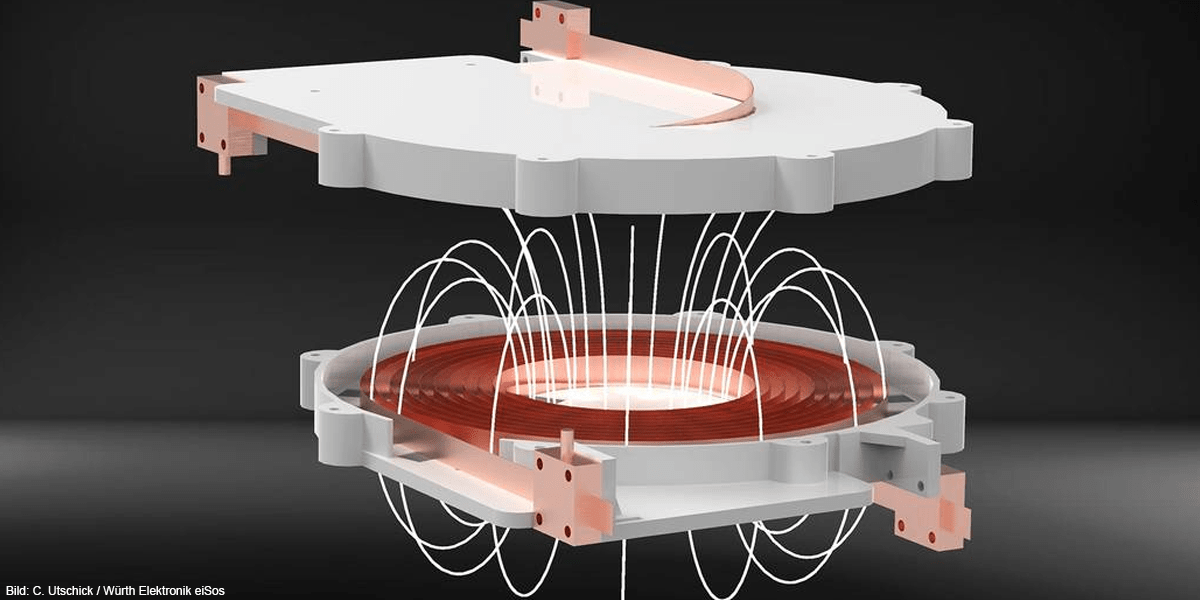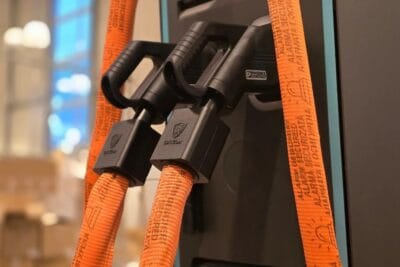TUM develops inductive charging with superconductors
A team from the Technical University of Munich (TUM) has succeeded in producing a coil made of superconducting wires that can transmit power of more than five kilowatts without contact and major losses. Possible applications include vehicles or even aircraft.
Inductive charging systems for vehicles are basically not new, but they have not yet become widely accepted, partly because a standard has been lacking up to now. In addition to this problem and the charging losses in contactless power transmission, the TUM researchers have identified another disadvantage: the fact that the transmission systems currently available are “large and heavy” at high power levels from the kilowatt range upwards as they are based on copper coils.
The team led by physicists Christoph Utschick and Rudolf Gross has now succeeded in developing a corresponding solution based on superconducting wires as part of research cooperation with the companies Würth Elektronik eiSos and Theva Dünnschichttechnik. Among other things, this solution is supposed to be lighter and, as mentioned, transmit the five kW “without great losses,” while efficiency is not precisely quantified.
To arrive at a functioning prototype, the researchers and their industrial partners had to solve several problems. One of them was that even in superconducting transmission coils, there are small AC losses. They increase with increasing transmission power and have the fatal consequence that the superconducting wires’ surface temperature increases and the superconductivity breaks down.
This was solved by specially developed spacers that separate the individual turns of the coil from each other. “This trick significantly reduces the AC losses in the coil,” says Christoph Utschick. “As a result, transmission powers up into the kilowatt range are achievable.” However, the spacers led to a new conflict of goals: if they made the distance between the turns of the superconducting coil small, the coil became very compact, but the researchers risked a breakdown of the superconductivity during operation. Larger distances, on the other hand, lead to lower power density.
“We optimised the distance between the individual windings using analytical and numerical simulations,” says Utschick. “The separation is approximately equal to half the width of the tape conductor.” The researchers now want to work on further increasing the transmittable power.
A cooling solution still needs to be developed
On the way to a possible practical application of the superconducting induction charging coil, another problem must be solved: cooling. The superconductors must be permanently cooled with liquid nitrogen to maintain their conductivity. But the cooling vessels cannot be made of metal. Otherwise, they would be heated in the coils’ magnetic field – such cooling systems are not yet commercially available, according to Rudolf Gross. “This still requires extensive development efforts,” says the professor of technical physics at TU Munich. “However, the work represents a major advance for contactless energy transfer of large powers.”
Utschick sees industrial robots, autonomous transport vehicles or high-tech medical devices, for example, as possible areas of application for the development. In addition to use in road traffic, inductive charging of electric racing vehicles on the track or autonomous electric aircraft is also conceivable, says the TUM researcher.
With reporting by Sebastian Schaal, Germany.





3 Comments